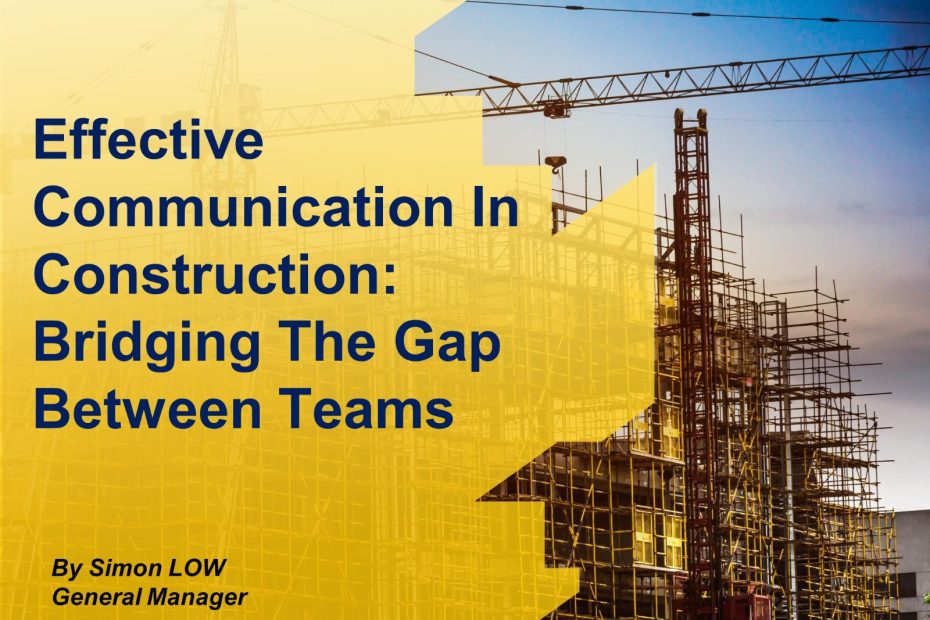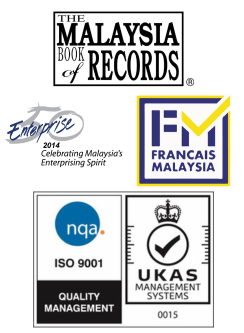Author: Simon LOW | 20 September, 2025
INTRODUCTION
Effective communication is fundamental in the construction industry, where projects involve numerous stakeholders, complex processes, and strict timelines. From architects and engineers to contractors and subcontractors, the success of any construction project depends on how well these diverse groups share information, tackle challenges, and coordinate their efforts. Instances of miscommunication can lead to costly mistakes, project delays, and safety hazards. Therefore, it is imperative to establish communication pathways and plans in order to ensure the progress and success of any project. This article discusses the significance of communication in the field of construction and outlines methods to connect teams better which can foster enhanced collaboration and improve project results.
THE IMPORTANCE OF EFFECTIVE COMMUNICATION IN CONSTRUCTION
Firstly, effective communication is essential for ensuring that different teams collaborate effectively, which fosters clear understanding among all stakeholders, making sure everyone comprehends the main message and reducing distractions caused by irrelevant information. Sharing information clearly and accurately helps avoid mistakes and confusion. Additionally, using appropriate communication methods makes it easier to manage relationships and handle tasks effectively.
Secondly, safety is another critical aspect that relies heavily on clear communication. Construction sites are often high-risk environments, where miscommunication regarding safety protocols or procedural changes can lead to serious accidents [1]. Transparent and regular communication about safety practices keeps all team members updated and aware of potential hazards, reducing the likelihood of accidents and ensuring a safer work environment [1]. Effective communication serves as a proactive measure, protecting the well-being of everyone on site.
Thirdly, effective communication plays a crucial role in managing client expectations and maintaining customer satisfaction [2]. Construction projects often involve multiple stakeholders, including clients, architects, consultants, and regulatory authorities. By keeping all parties informed about project progress, challenges, and potential changes, construction professionals can manage expectations and address concerns in a timely manner. This transparency builds trust and helps to ensure that the final product meets or exceeds the client’s expectations.
Lastly, a well-informed team not only adapts quickly to changes but also anticipates challenges, maintaining project momentum through proactive responses to updates about milestones or potential delays. Transparent communication about progress, challenges, and changes, along with this efficiency, builds trust and fosters satisfaction, ensuring that the final product aligns with the client’s vision [2]. Together, these efforts contribute to smoother project execution and a more positive client experience.
THE KEY STRATEGIES FOR ENHANCING COMMUNICATION IN CONSTRUCTION
1. Regular Team Meetings and Briefings
In construction, aligning the team consistently is crucial, and scheduled meetings provide the perfect platform for achieving this. Weekly project meetings for managers and daily morning briefings for on-site workers allow the team to communicate project updates, resolve issues immediately, and voicing concerns. These regular touchpoints encourage team morale and engagement, as each member feels informed and involved in the project’s progress. Furthermore, these meetings create a routine that keeps everyone focused on objectives and fosters an open dialogue where potential obstacles are identified early, preventing delays and costly errors.
2. Encouraging Open Feedback Channels
Open feedback channels empower team members to express challenges and insights, allowing project leaders to gain valuable perspectives and make necessary adjustments [3]. When employees feel their opinions are valued, they are more inclined to provide recommendations for enhancing work procedures or averting possible problems. Tools such as anonymous surveys, suggestion boxes, or digital forms offer safe, easy ways for workers to provide honest feedback. Leaders should regularly review this feedback and take visible actions to address concerns, creating a culture of trust and proactive problem-solving [4].
3. Clear Role Definition and Responsibilities
Clearly defining roles and responsibilities from the outset helps prevent overlaps, gaps, and misunderstandings. When team members clearly understand their responsibilities, it reduces confusion about who oversees specific tasks. This clarity makes it easier for everyone to focus on their work without overlapping or missing duties. Leaders should clarify roles, relationships, and where to get information or make decisions. A clear role definition also simplifies reporting lines, so team members know who to communicate with in specific situations and avoid confusion on-site [5].
4. Recognizing and Rewarding Good Communication Practices
Positive reinforcement is a powerful motivator. Recognizing team members who demonstrate exceptional communication skills can inspire others to adopt similar practices. Leaders can reward individuals who proactively share helpful information, engage in open feedback, or effectively resolve conflicts. By fostering a workplace culture that values and acknowledges good communication, encourage teams to continue cultivating these habits, which fosters a more collaborative and efficient workplace.
CONCLUSION
Effective communication in construction goes beyond merely exchanging information; it involves establishing a seamless connection among all elements of a project. From regular meetings to embracing technology and fostering open feedback, these strategies can greatly enhance communication and lead to a more efficient and harmonious project environment. By building a strong foundation of effective communication, construction teams can minimize delays, avoid costly mistakes, and ensure that everyone, from on-site workers to project managers, moves forward together toward successful project completion.
Simon LOW
General Manager
IPM Professional Services Sdn Bhd
References:
[1] Ne’matullah, K. & Pek, L.S & Roslan, S. (2021). Investigating communicative barriers on construction industry productivity in Malaysia: An overview. International Journal of Evaluation and Research in Education (IJERE), 10(2), 476. Retrieved on 20th September 2025 from https://www.semanticscholar.org/paper/Investigating-communicative-barriers-on-industry-in-Ne%27matullah-Pek/6644bb73e047815e2fe03a9f3e163385043e0f7c/
[2] DBS Group (n.d.). Communication: the key to commercial construction success. DBS Group. Retrieved on 20th September 2025 from https://www.dbsg.com/blog/communication-in-design-build-project-delivery/
[3] Management 3.0 (2021). How to promote a Healthy Feedback Culture. Retrieved on 20th September 2025 from https://management30.com/blog/healthy-feedback-culture/
[4] Conexpo-Con/Agg (2021). Keys to effective communication for construction leaders. Retrieved on 20th September 2025 from https://www.conexpoconagg.com/news/keys-to-effective-communication-for-construction-l
[5] Albuali, M. (2021). Effective Strategies for Managing Communication in a Project. International Journal of Applied Industrial Engineering (IJAIE), 8(1), 1-11. Retrieved on 20th September 2025 from
https://www.researchgate.net/publication/352108029_Effective_Strategies_for_Communicating_and_Managing_Communication_in_a_Project_Team_My_Perspective/

